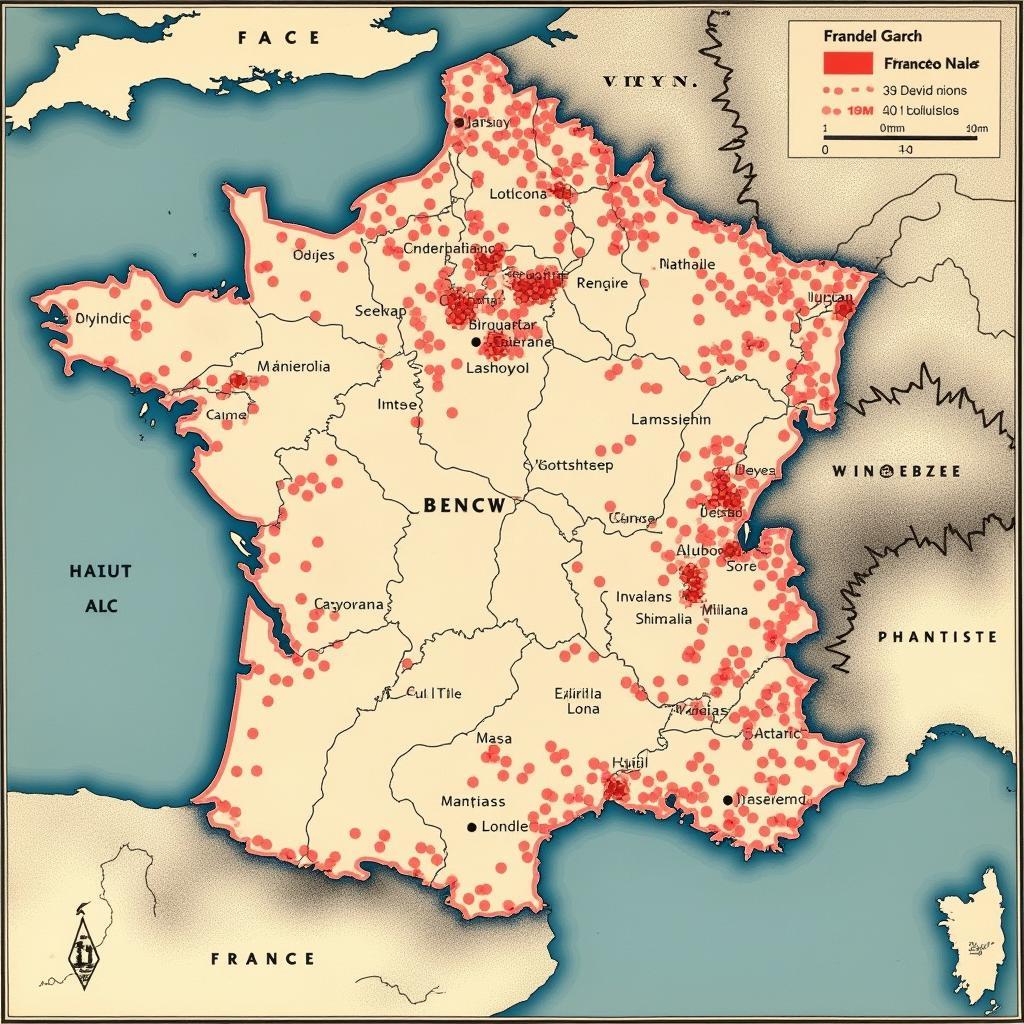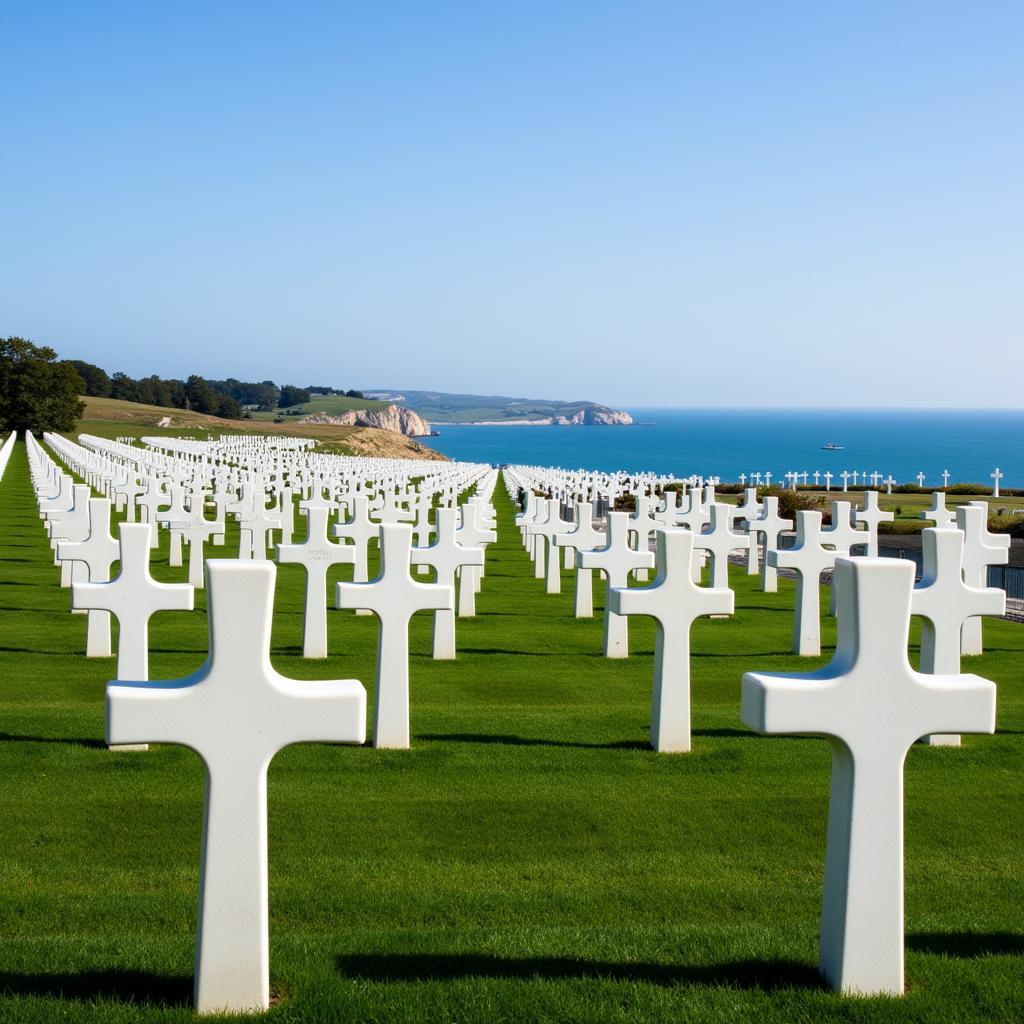Exploring Historical Battlefields: France Map and Beyond
October 20, 2024The battlefields of France stand as poignant reminders of the tumultuous past, etched into the landscape with stories of valor, sacrifice, and the human cost of conflict. A “Battlefields France Map” offers more than just geographical locations; it unlocks a gateway to understanding pivotal moments in history and the profound impact they’ve had on the world we know today.
 World War One Battlefields in France
World War One Battlefields in France
Unveiling the Layers of History: Why a Battlefields France Map Matters
For history enthusiasts, military strategists, and curious travelers alike, a battlefields France map serves as an invaluable tool. It allows us to trace the footsteps of soldiers, comprehend the strategic decisions made by commanders, and visualize the sheer scale of these historical clashes. From the trenches of World War I to the D-Day landing beaches of World War II, France bears witness to some of the most significant events in human history.
Delving Deeper: Key Conflicts Represented on a Battlefields France Map
A comprehensive battlefields France map encompasses conflicts spanning centuries, each leaving an indelible mark on the nation’s identity. Some of the most notable wars and battles etched onto this historical tapestry include:
- Hundred Years’ War (1337-1453): Sites like Agincourt, Orléans, and Castillon resonate with tales of English and French rivalry.
- French Wars of Religion (1562-1598): The battlefields of Dreux, Saint-Denis, and Ivry reflect the religious and political turmoil that gripped France.
- Franco-Prussian War (1870-1871): Sedan and Metz stand as solemn testaments to the Prussian victory that redrew the map of Europe.
- World War I (1914-1918): The Somme, Verdun, and the Marne – names synonymous with devastating trench warfare and immense loss of life.
- World War II (1939-1945): Normandy, with its D-Day landing beaches, stands alongside significant sites like Dunkirk, the Ardennes Forest (Battle of the Bulge), and the liberation route of Paris.
 Normandy Beach D-Day Memorial
Normandy Beach D-Day Memorial
Beyond the Map: Experiencing French Battlefields Today
Visiting these historical sites transcends simply observing geographical markers. Modern-day memorials, preserved trenches, and museums offer immersive experiences that bring history to life. Walking through the trenches of Verdun, for example, allows visitors to grasp the claustrophobic and perilous conditions endured by soldiers. Similarly, exploring the meticulously maintained cemeteries and memorials at Normandy pays tribute to the ultimate sacrifice made by countless individuals.
Planning Your Journey: Tips for Utilizing a Battlefields France Map
- Define Your Focus: Decide which historical period or conflict you want to explore, as this will help narrow your search and tailor your itinerary.
- Research Specific Sites: Identify specific memorials, museums, or preserved battlefields that align with your interests. Many sites offer guided tours led by knowledgeable historians.
- Consider Time and Logistics: Allow ample time for travel between locations, especially if you plan to visit multiple battlefields across different regions of France.
- Embrace Local Culture: Immerse yourself in the local culture by sampling regional cuisine, exploring nearby towns, and engaging with the stories and perspectives of local residents.
Remembering and Learning: The Legacy of French Battlefields
The battlefields of France serve as poignant reminders of the human capacity for both conflict and resilience. Exploring these sites offers a profound opportunity to reflect on the past, honor the sacrifices made, and foster a deeper appreciation for the fragility of peace. By understanding the lessons etched onto the “battlefields France map”, we gain valuable insights into the events that have shaped our world and inspire a commitment to a more peaceful future.
FAQs about Visiting French Battlefields
1. What is the best time of year to visit French battlefields?
Spring and fall generally offer pleasant weather and fewer crowds compared to the peak summer season. However, some sites may have limited hours during the off-season, so it’s always best to check in advance.
2. Are French battlefield sites accessible for visitors with disabilities?
Many sites strive to provide accessibility for visitors with disabilities. It’s recommended to check with individual sites beforehand to inquire about specific accessibility features.
3. Can I visit French battlefields independently, or are guided tours recommended?
While it’s possible to explore some sites independently, guided tours often provide valuable historical context and insights that enhance the overall experience.
4. Are there age restrictions for visiting French battlefield sites?
Some sites may have age restrictions or recommendations due to the sensitive nature of the subject matter. It’s advisable to review guidelines on official websites or contact sites directly for clarification.
5. What should I pack for a visit to a French battlefield site?
Comfortable walking shoes are essential, as you’ll likely be doing a fair amount of walking. Consider packing sunscreen, a hat, and rain gear, depending on the weather forecast.
For additional support, please contact us at Phone Number: 0915117113, Email: [email protected] Or visit us at: To 3 Kp Binh An, Phu Thuong, Vietnam, Binh Phuoc 830000, Vietnam. We have a 24/7 customer support team.